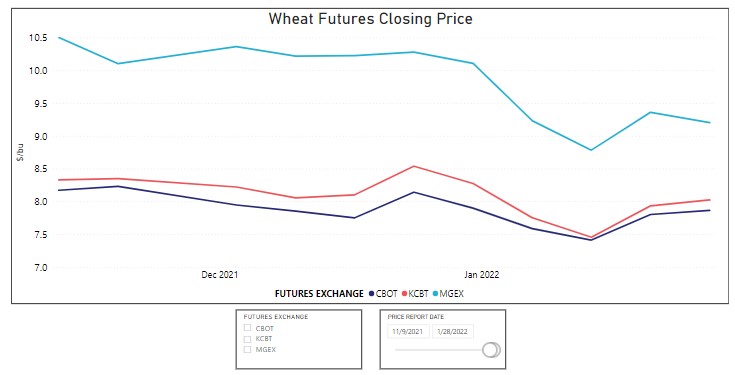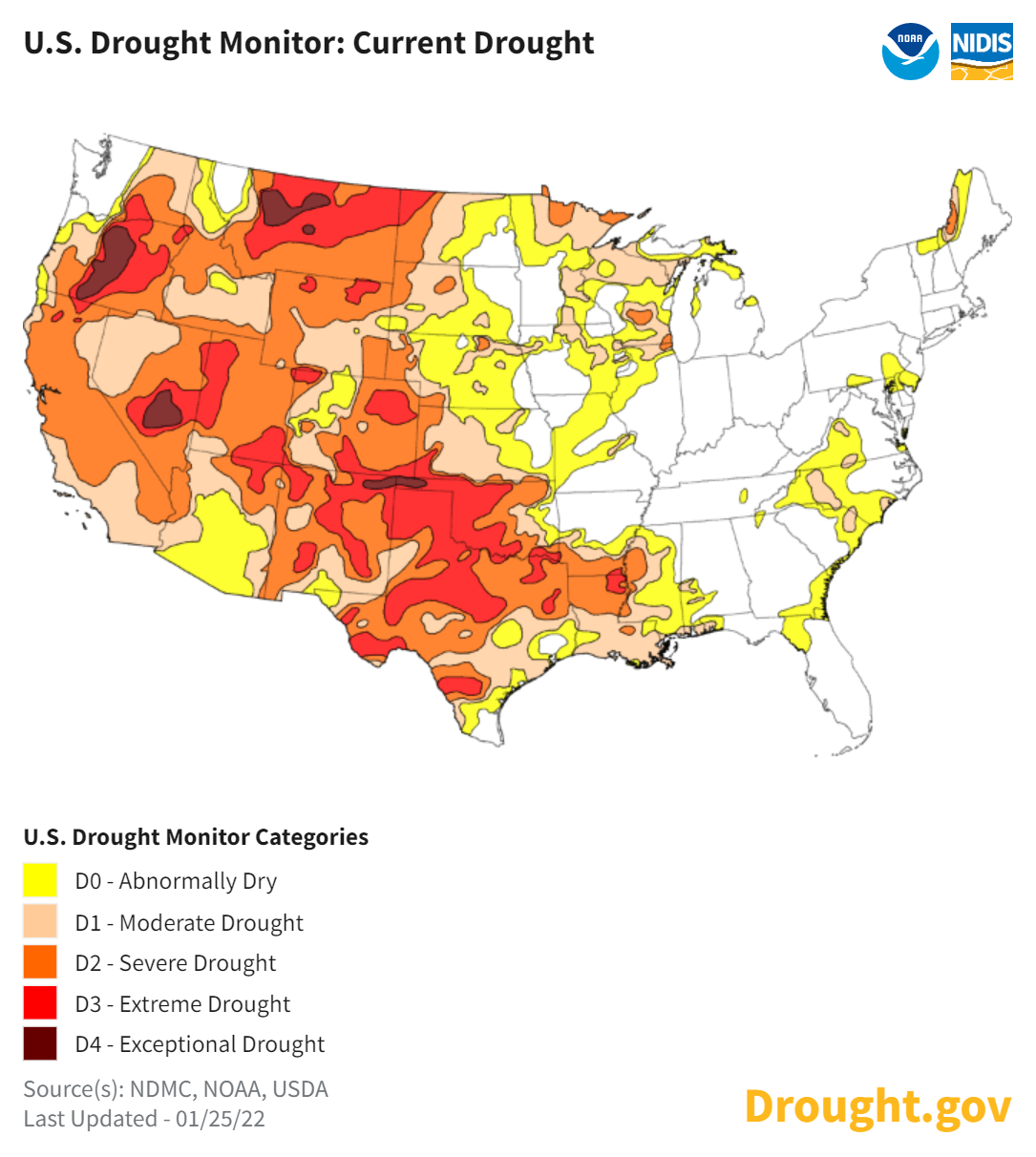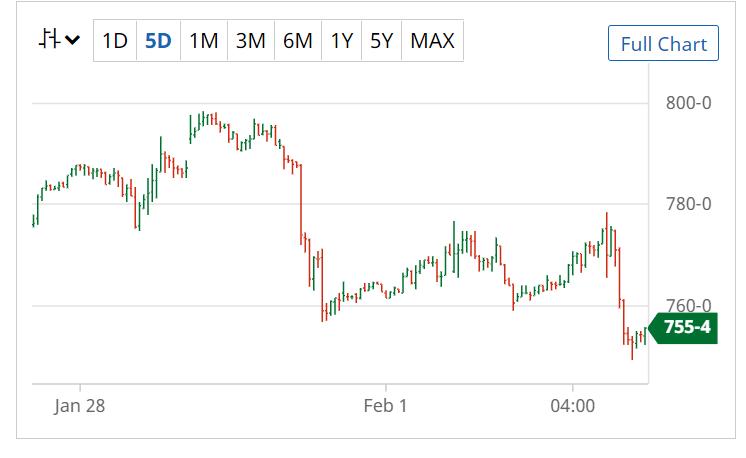Since late December, U.S. wheat futures prices moved down through mid-January and have bounced up and down since then. For example, prices surged early the week of January 24 but lost steam by the end of the week. And the March ’22 hard red winter future price lost 4% as of Wednesday’s close. Such wheat market volatility is a challenge for importers. And there are many elements adding volatility that deserve a closer look.

Russia and Ukraine
The ongoing tension between Russia and Ukraine has certainly added wheat market volatility. Both countries are major grain exporters, and the market seems to accept that any disruption there could have an immediate effect on supply. One grain trader quoted in AgriCensus said, “you cannot ignore [the topic], and [it] makes any trade decision very difficult to make … until things get clearer.”
But not everybody is so skittish. SoveEcon, a Russian agriculture consultancy, raised its forecast for 2021/22 Russian wheat exports by 200,000 metric tons to 34.4 million metric tons. The consultancy pointed out that the last time Russia invaded Ukraine, it did not disrupt grain exports. However, it did spark wheat market volatility as Black Sea wheat prices rose 25% in just two months.
Persistent Drought
Commercial futures trading also plays a role in wheat market volatility. The managed money takes quick profits that pressure the markets. But speculators also appear to be bullish in their wheat outlook primarily because of ongoing weather challenges to the old and new Northern Hemisphere wheat crops.
And yet a forecast for rain and snow in those areas this week prompted that significant drop in HRW futures prices. It is too early to say what the rest of 2022 has in store, but moisture is needed to put new crop winter wheat on a good footing. So, wheat importers can expect the market to continue moving with weather news.

Logistic Challenges
Grain traders have had a lot to say recently about rail performance and its impact on export basis the last few months. Since December, a slowdown in rail logistics has supported wheat export basis. Fortunately, traders say those issues improved in January, but rail service for the trade is still behind where it was the year before.
According to the Association of American Railroads, U.S. weekly rail traffic for the week ending January 15 was down 7% compared to the same week last year. All grain shipments, including wheat, were down 11% the same week. In the USDA’s weekly Transportation Report, bids for shuttle service in the secondary railcar market have been high, although down significantly from where they were at the beginning of January.
New Pandemic Normal?
Lastly, we look at the persistent presence of COVID-19. This is the third winter of pandemic-induced challenges. Though lockdowns are increasingly rare, pandemic disruptions continue to rattle parts of the marketplace. It continues to be a significant challenge for logistics. That includes worker shortages and increased absences. Supply chain bottle necks will likely continue to be part of the wheat market volatility equation in 2022.
Help is Available
As these forces continue to affect wheat market volatility, importers can be assured that the U.S. wheat store will remain open for efficient delivery of high-quality milling wheat. Our local U.S. Wheat Associates (USW) representatives are available to help buyers navigate the market’s challenges – and opportunities – no matter how much volatility it throws at them.
By Michael Anderson, USW Market Analyst


